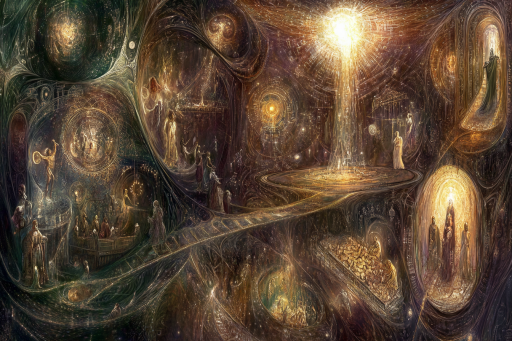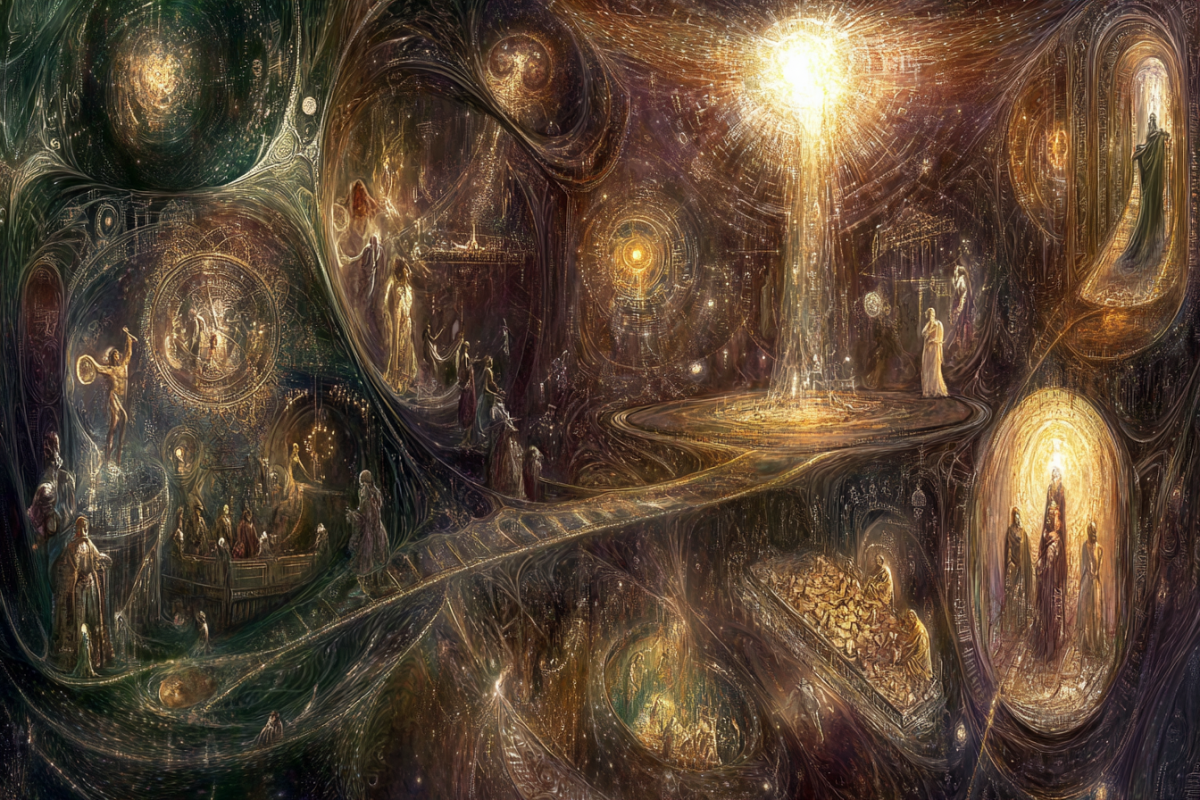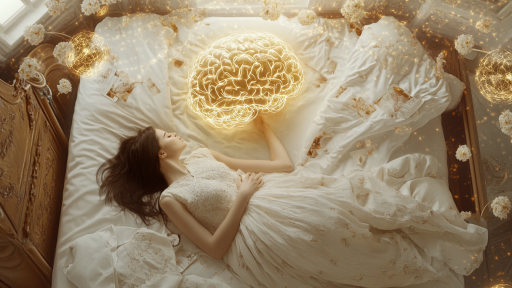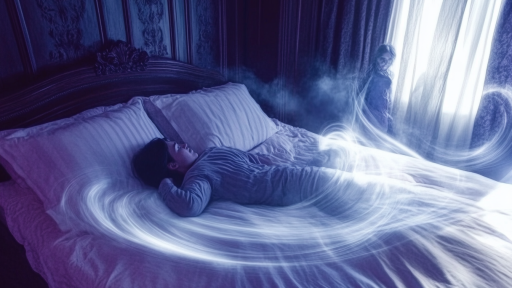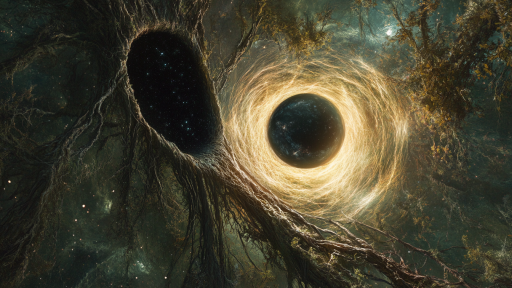
Ancient civilizations had complex and often eerie beliefs about what happens after death. Some imagined elaborate underworlds filled with trials and punishments, while others believed in a journey through celestial realms or reincarnation into new forms. These beliefs shaped their cultures, rituals, and even how they treated the dead. From terrifying judgment days to paradise islands in the sky, these bizarre afterlife beliefs reveal the many ways ancient people tried to make sense of the unknown.
The Egyptian Duat – A Maze of Deadly Trials

The ancient Egyptians believed that the afterlife was a perilous journey through the Duat, an underworld filled with traps, demons, and supernatural obstacles. The dead had to pass through terrifying gates, face monstrous creatures, and recite magic spells to progress. At the end of this journey, their heart was weighed against the Feather of Truth—if it was too heavy with sin, they were devoured by the fearsome goddess Ammit. Only those who passed this final test could enter the blissful paradise of Aaru.
The Mayan Xibalba – The Place of Fear

The Maya envisioned the afterlife as a terrifying underworld called Xibalba, ruled by sinister gods who delighted in tormenting souls. Those who entered had to endure deadly trials, including rivers of scorpions, dark houses filled with blood, and games against demonic lords. Some spirits never escaped and were doomed to wander the underworld forever. Unlike other cultures that offered the possibility of heaven, the Maya believed that most people were destined for Xibalba’s horrors.
The Norse Hel – A Gloomy Afterlife for the Ordinary Dead

In Norse mythology, not all warriors went to Valhalla—many ended up in Hel, a cold and misty underworld ruled by the goddess Hel. Unlike the feasting and battles of Odin’s hall, Hel was a quiet, dreary place where the dead simply existed without glory. Those who died of sickness or old age were thought to be sent there, while only those who died heroically in battle could escape to Valhalla. The Norse afterlife reflected their harsh, warrior-based worldview.
The Zoroastrian Chinvat Bridge – A Perilous Crossing

Ancient Zoroastrians believed that after death, souls had to cross the Chinvat Bridge, which stretched over a deep abyss. For the righteous, the bridge was wide and easy to cross, leading to a paradise filled with eternal joy. But for the wicked, the bridge became razor-thin, and they fell into the dark pit below, where demons tormented them for eternity. The idea of a judgment-based crossing influenced later religious concepts of heaven and hell.
The Japanese Yomi – A Shadowy Land of Rotting Corpses

In Shinto beliefs, the afterlife was known as Yomi, a dark and decaying realm where the dead continued to exist, but in a shadowy, miserable state. Unlike other cultures that promised reincarnation or heavenly rewards, Yomi was simply an inescapable place of stagnation. According to legend, even the goddess Izanami, who ruled Yomi, was transformed into a rotting corpse when she entered. The eerie belief suggested that death was not a transformation, but an eternal prison.
The Aztec Afterlife – Four Destinies Based on Death

The Aztecs believed that a person’s afterlife was determined by how they died rather than how they lived. Warriors who died in battle were sent to the sun god’s paradise, while those who drowned joined the water god Tlaloc’s afterlife. Those who died of old age or illness were sent on a dangerous four-year journey through the underworld, Mictlan, where they faced trials before reaching their final resting place. In the Aztec worldview, death was just the beginning of an even greater challenge.
The Tibetan Bardo – A Hallucinatory Realm Between Lives

According to Tibetan Buddhism, the dead enter the Bardo, a strange and shifting realm filled with illusions, gods, and terrifying visions. Here, souls undergo a series of experiences that determine whether they will be reborn, achieve enlightenment, or fall into suffering. Some see brilliant lights and deities, while others are chased by horrifying demons—though these are believed to be projections of their own minds. Those who fail to escape the cycle of rebirth must return to the physical world to try again.
The Mesopotamian Land of No Return – A Gloomy Existence

The Sumerians and Babylonians believed in an afterlife called the “Land of No Return,” a dark and joyless place beneath the earth. Here, souls were covered in dust and forced to eat dirt for eternity, with no chance of escape. Even great kings and heroes were trapped in this bleak existence, making the afterlife seem more like a curse than a reward. Unlike many cultures that offered hope after death, Mesopotamian beliefs painted a grim and inescapable fate.
The Celtic Otherworld – A Land of Eternal Feasting

Unlike many ancient beliefs that viewed the afterlife as a place of suffering, the Celts imagined the Otherworld as a paradise filled with endless feasts, music, and happiness. Some believed that brave warriors could enter while still alive, experiencing eternal youth and joy. Time in the Otherworld was said to pass differently, with travelers returning to find centuries had gone by. This belief reflected the Celts’ deep connection to nature and the mysteries of the unseen world.
What Awaits Beyond the Veil?

Ancient civilizations tried to make sense of death by creating elaborate visions of the afterlife—some filled with terror, others with paradise. Whether it was crossing a dangerous bridge, battling demons, or simply fading into darkness, their beliefs shaped how they lived their lives. If so many different cultures imagined such vastly different fates, what does that say about what truly happens after death? Perhaps the greatest mystery of all is one we will never solve.

